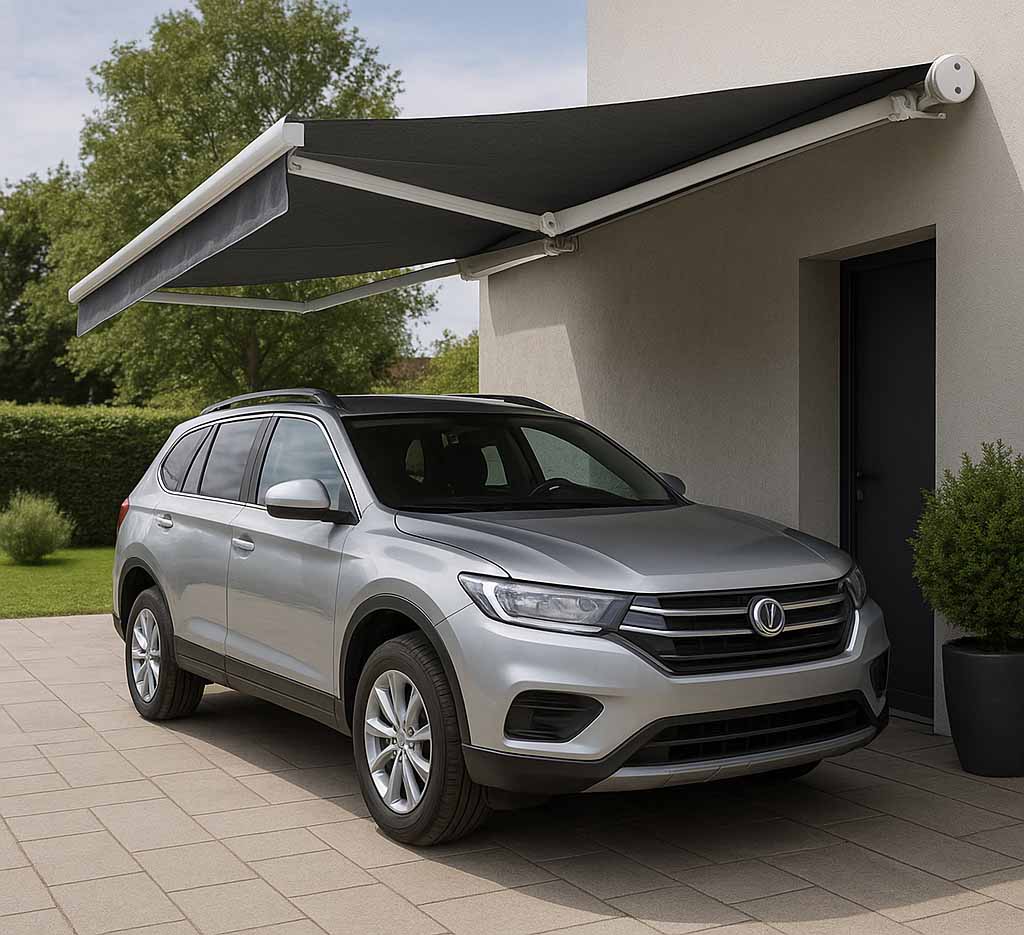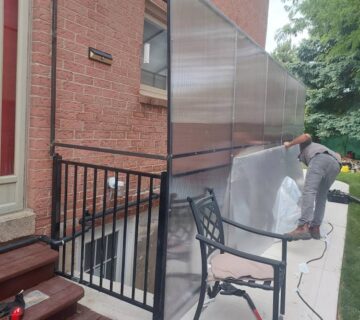An electric awning uses an electric motor and can be operated automatically via a remote control or a switch. These awnings not only provide shade and protect against sunlight, rain, and snow, but also allow adjustment of the extension according to environmental conditions. Using an electric awning offers greater convenience and ease compared to manual awnings, and its modern design and ability to complement the building’s façade enhance both the aesthetic and functional aspects of the space.
Applications of Electric Awnings
Electric awnings are installed at shop entrances to protect storefronts and customers, on balconies and terraces to create a pleasant outdoor space, in restaurants and cafes to expand seating areas, and in parking areas to protect vehicles.
Features and Benefits
Key advantages of electric awnings include easy control via remote or switch, the option to connect to wind and rain sensors, modern design, compatibility with various dimensions, and greater durability compared to manual awnings.
Important Considerations When Buying an Electric Awning
When selecting an electric awning, special attention should be paid to the quality of the motor and warranty, the fabric or covering material (waterproof and UV-resistant), design compatibility with the building façade, and after-sales service.
Comparison of Maintenance Costs and Prices: Electric vs. Manual Awnings
Because electric awnings can be retracted, their fabric and covering last longer than fixed awnings (the fabric of fixed awnings is continuously exposed to environmental conditions and sunlight, which reduces its lifespan). However, the presence of electronic components and motorized mechanisms increases maintenance and repair costs and requires more frequent servicing. Additionally, due to the electrical equipment and smart systems installed, the price of electric awnings is higher than that of traditional manual awnings.



No comment